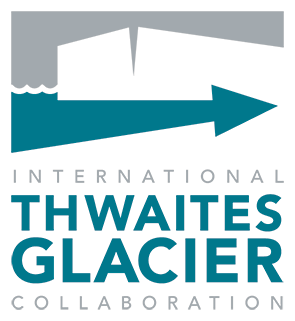The sudden drainage of subglacial lakes could play a role in destabilising the Antarctic ice sheet, a new study reveals.
The research, which was part of the International Thwaites Glacier Collaboration, sheds new light on the influence of subglacial hydrology on one of Antarctica’s most unstable glaciers.
Nicknamed the ‘Doomsday Glacier’ for its potential to significantly raise sea levels if it collapses, Thwaites has been rapidly losing ice over the past two decades. This study, published in Nature Communications, sheds light on a new mechanism behind its retreat.
In 2013, seven subglacial lakes (vast bodies of freshwater, concealed deep below the ice surface) below the Thwaites Glacier in West Antarctica suddenly drained, releasing around seven cubic kilometres of freshwater into the Amundsen Sea – around the volume of Scotland’s Loch Ness.
Using high-resolution satellite altimetry from the European Space Agency’s Cryosat mission and a suite of other satellites and in-situ observations, the researchers analysed changes in ice elevation, ice velocity, basal melt and ocean conditions at the margin of the glacier.
By pairing their findings with ocean modelling, they discovered that drainage events cause a plume of cold, freshwater to rise. These plumes create turbulence and an upwelling of warm, deep ocean water which increases the amount of melting under the floating ice shelf – a process called basal melting. The rate of melting can temporarily double as a result.
One of the key impacts of increased basal melting is on the glacier’s grounding line – the boundary where the ice sheet lifts of the bedrock and begins to float. As the ice shelf melts from underneath and thin, the grounding line can retreat inland, making the glacier less stable.
Professor Noel Gourmelen, lead author on the paper and part of the ITGC PROPHET team says:
“We expected that water draining from the underside of the ice sheet plays a role in modulating ocean melting, the sheer magnitude of this lake drainage gave us the opportunity to finally observe and quantify its impact
“The lake outflow took place in a key sector impacting Thwaites’ stability, the drainage in effect momentarily turbo-charged Thwaites’ ocean-driven retreat."
Interestingly, the researchers discovered that a steady, continuous flow of water from subglacial lakes may in the long run produce more melting than abrupt drainage events. Big pulses of freshwater cause sudden spikes in melting, but a regular flow keeps the conditions under the ice shelf primed for melting.
The team say these findings challenge how we currently represent grounding zones in models used to predict future ice loss, and subglacial hydrology needs to be better incorporated. By omitting or oversimplifying these drainage processes, we may be underestimating the melt rate of glaciers like Thwaites.
As global temperatures rise and surface melt increases, researchers expect to see more subglacial water beneath ice sheets. This could lead to more frequent drainage events and further destabilise vulnerable glaciers.
The influence of subglacial lake discharge on Thwaites Glacier ice-shelf melting and grounding-line retreat is published in Nature Communications.
Want to know more? Check out this article on the European Space Agency website or watch their explainer video.






